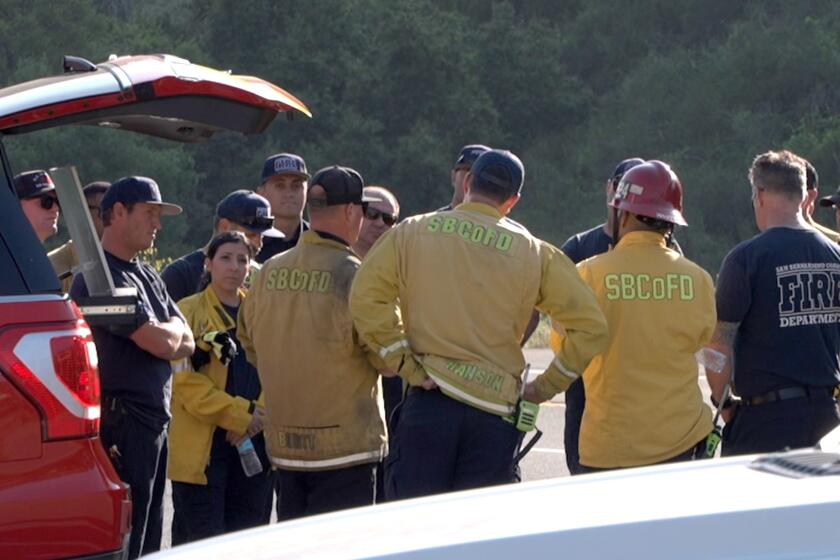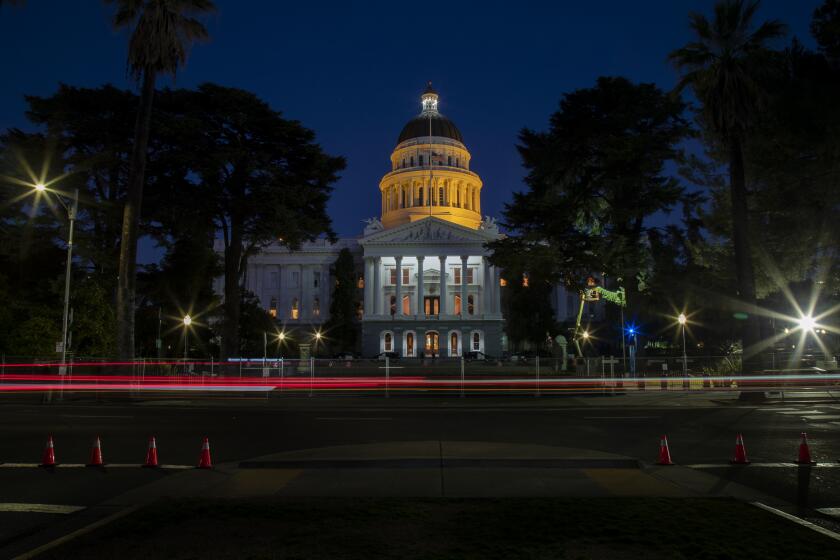State Offers to Build Science Institute for Super Collider
In an effort to distance itself from other states competing for a proposed multibillion-dollar federal atom-smasher, California will offer to build and fund a university-level science institute as part of its $560-million incentive package, state officials disclosed Monday.
At the same time, they warned that their effort to capture the $4.4-billion superconducting super collider--and the thousands of jobs it promises--depends on the Legislature’s swiftly passing an authorization bill.
The bill, which would allow the state to sell bonds to finance its bid, has been stalled by partisan debate over affirmative action goals for contractors. Atty. Gen. John Van de Kamp has advised the Legislature that California cannot submit its bid until the bill is passed.
Despite potential difficulties, California officials were clearly pleased with their proposal and upbeat about the state’s prospects in the competition involving at least 30 other states.
“We already know the super collider would be good for California,” said William B. Baker, the University of California vice president who managed the state’s bid process. “These proposals show that California will be good for the super collider.”
The science institute, which would be built next to the 53-mile oval-shaped collider, apparently is unique among the competing states’ bids. California also would offer various other enticements, from new utilities to old-fashioned sunshine.
Leading competitors were reluctant to discuss specifics of their bids, but the closest proposal appears to be a university-centered program considered by Illinois officials. An Illinois spokeswoman said Monday, however, that the idea is not part of the state’s current proposal.
The California Collider Commission is expected to give final approval to the state’s bid package when it meets Wednesday in Sacramento. The commission is an ad hoc gubernatorial body formed to prepare the state’s collider bids.
California will nominate two sites for consideration by the U.S. Department of Energy and a special panel selected by the National Academy of Sciences and the National Academy of Engineering. One is just east of Stockton in San Joaquin County; the other is west of Sacramento in Yolo and Solano counties.
Bids must be submitted in Washington by Sept. 2; a short list of finalists is scheduled to be announced by the end of this year, with the preferred site named in July.
Competing states have spent the last five months working on their bid packages, but no state other than California has offered to publicly release specifics of its bid.
California officials said they are disclosing their bid because most of the details would have to be revealed in legislative debate over the state funding package before a conference committee in Sacramento.
Legislative leaders had said they believed that the state’s bid could be made contingent on their approval of the bond package. The attorney general’s opinion says, however, that the Collider Commission cannot commit the state to the bond package without the Legislature’s vote.
The bill’s author, Assemblyman Sam Farr (D-Carmel), said he hopes movement toward a compromise will come Wednesday, when Deukmejian and legislative leaders plan to meet to discuss the collider and other issues.
Democrats want to award 20% of contracts resulting from the bond issue to firms owned by women and 20% to firms owned by minorities. Competitive bid contracts would not be covered. Republicans prefer less specific goals, saying the 40% target is unreachable.
The proposal seeks to attract the collider to California by offering $560 million in incentives--the science institute, 7,500 acres of land, new roads and other infrastructure, housing assistance, financial aid for local schools and the undisclosed subsidy.
At a press conference in Sacramento, state collider officials declined to discuss the amount and nature of that subsidy--called “voluntary financial incentives”--except to say it would be counted as part of the overall $560-million bid package.
The officials also were “purposefully . . . vague” about the proposed science institute, said Collider Commission spokesman John Gustafson.
In twin nine-volume, 624-page bids--one for each site--the institute is described only as a $5-million building designed to provide $5 million a year in fellowships to distinguished visiting scientists and to offer graduate courses in fields relevant to particle physics and accelerator physics. It also would house an education outreach program for local schools.
All elements of the bid package would be delivered to federal officials during the anticipated eight-year construction phase. They would be paid for with the added revenues the state would receive from the 3,000 construction, 500 scientific and technical and 7,900 ancillary jobs created by the project.
The net cost to the state during this time, proponents say, would be zero. Once the collider starts to operate in 1996--and for its projected 20-year useful life--a study by UCLA economists projects that state government would collect $30 million or more in additional tax revenues annually from economic activity spurred by the project.
The collider, if approved by Congress, would be the largest scientific tool in history--a 10-foot-diameter tunnel buried 50 feet or more underground in a loop big enough to circle the Westside of Los Angeles, from downtown to the beach and from the Hollywood Hills to the airport.
Counter-rotating beams of subatomic particles would be accelerated to near the speed of light inside super-cooled loops of 10,000 superconducting magnets. At certain points, the beams would collide head-on and sophisticated computerized “detectors” would analyze the resulting submicroscopic debris.
The goal is to find the most basic building blocks of nature--particles and forces that could lead to a profound understanding of the universe and may precipitate revolutionary advances in a variety of fields, from astronomy and medicine to energy production and materials sciences.
Times staff writer Douglas Shuit in Sacramento contributed to this story.
More to Read
Start your day right
Sign up for Essential California for news, features and recommendations from the L.A. Times and beyond in your inbox six days a week.
You may occasionally receive promotional content from the Los Angeles Times.






